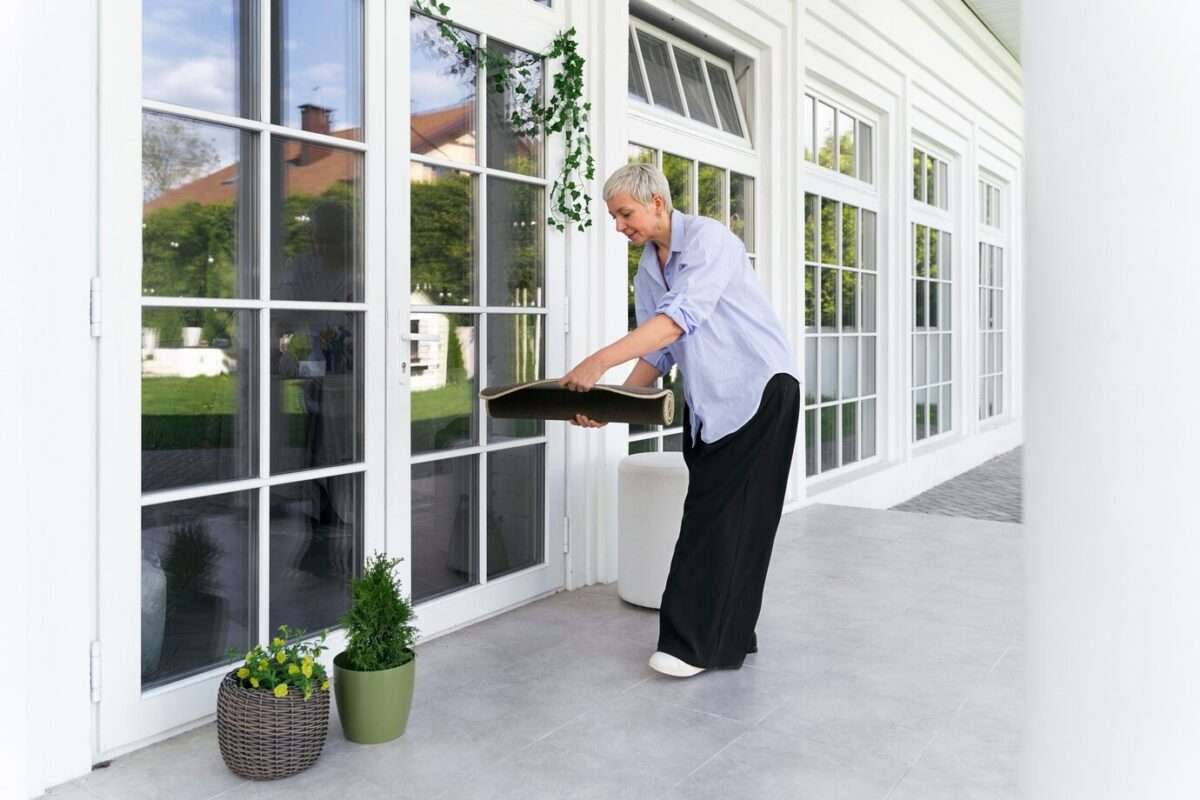Does your living room turn into an icebox every winter, or feel like a furnace come summer? Drafty windows could be the culprit! But fear not, cozy comfort doesn’t have to come at a hefty price. This blog will explore clever, affordable ways to improve your home’s glazing, making it more energy-efficient and saving you money on utility bills. We’ll cover everything from DIY hacks to low-cost window treatments, all designed to keep the warm air in during winter and the hot air out during summer. So, grab your tools (or your shopping list) and get ready to transform your home into a haven of year-round comfort, without breaking the bank!
Assessing Current Glazing in Your Home
Before diving into specific solutions, it’s important to assess your current windows. Here’s a quick guide to help you identify areas for improvement:
Window Age and Condition: Are your windows old and single-paned? Do they feel drafty when closed? Look for visible cracks or gaps around the frames. Older windows are prime candidates for upgrades, as modern double or triple-paned windows offer superior insulation.
Window Seals: Over time, window seals can deteriorate, allowing drafts and losing their insulating properties. A simple test is to hold a lit lighter near the window frame on a windy day. If the flame flickers, it’s a sign the seal is compromised. While some seals can be repaired, significant damage may necessitate replacing the entire window. If you suspect major window issues, consider consulting a professional glazier in Wien. They can assess your windows and recommend the most cost-effective solutions.
DIY Glazing Improvements: Simple Hacks for Big Results
For those on a tight budget, there are several DIY methods to improve your windows’ energy efficiency. These solutions won’t offer the same level of performance as replacing windows, but they can make a noticeable difference in comfort and energy bills.
Weatherstripping: Gaps around windows are prime culprits for drafts. Apply weatherstripping, a self-adhesive foam or felt tape, around the edges of your window frames. This creates a tighter seal, preventing drafts and improving insulation.
Window Insulation Film: This transparent film applied directly to the windows creates an additional air layer, similar to double-pane windows. While not as effective, it can offer a noticeable improvement in insulation, particularly during colder months. Installation is relatively simple and requires only a hairdryer and a smoothing tool.
Low-Cost Upgrades: Balancing Budget with Performance
For a step up from DIY solutions, consider these budget-friendly upgrades:
Secondary Glazing: This involves installing a second layer of glazing, typically acrylic sheets, in front of your existing windows. While not as aesthetically pleasing as new windows, it creates a significant air gap that offers improved insulation. Secondary glazing kits are readily available at home improvement stores and can be a great option for DIY enthusiasts.
Reflective Window Treatments: Invest in curtains or blinds with a reflective backing. These specialized treatments reflect heat back into your home during winter and outwards during summer, helping regulate temperature and reducing reliance on heating and cooling systems. Look for curtains with a white backing for winter and a metallic backing for summer to maximize effectiveness.
Harnessing the Power of Nature: Utilizing Natural Light and Heat
While improving window insulation is crucial, don’t forget the benefits of natural light and heat! Strategic use of these resources can further enhance your home’s energy efficiency and comfort:
Window Placement: If you’re planning window replacements or renovations, consider the placement for optimal natural light. South-facing windows provide the most natural warmth during winter, while strategically placed overhangs can shade these windows in summer to prevent overheating. North-facing windows offer diffused light year-round, perfect for living spaces.
Light Shelves and Skylights: Light shelves are interior ledges that capture and distribute natural light deeper into a room, reducing reliance on artificial lighting. Skylights strategically placed in hallways or attics can bathe your home in natural light while offering passive solar heat gain in the winter. Remember, proper ventilation is key when using skylights to avoid overheating during summer.
In conclusion,
With a little effort and planning, you can significantly improve your home’s comfort and energy efficiency without breaking the bank. By following these tips, you can address drafts, utilize natural light and heat, and implement affordable upgrades to create a more inviting and cost-effective living space. So why wait? Start your journey to a more comfortable and energy-efficient home today!

As the editor of the blog, She curate insightful content that sparks curiosity and fosters learning. With a passion for storytelling and a keen eye for detail, she strive to bring diverse perspectives and engaging narratives to readers, ensuring every piece informs, inspires, and enriches.










